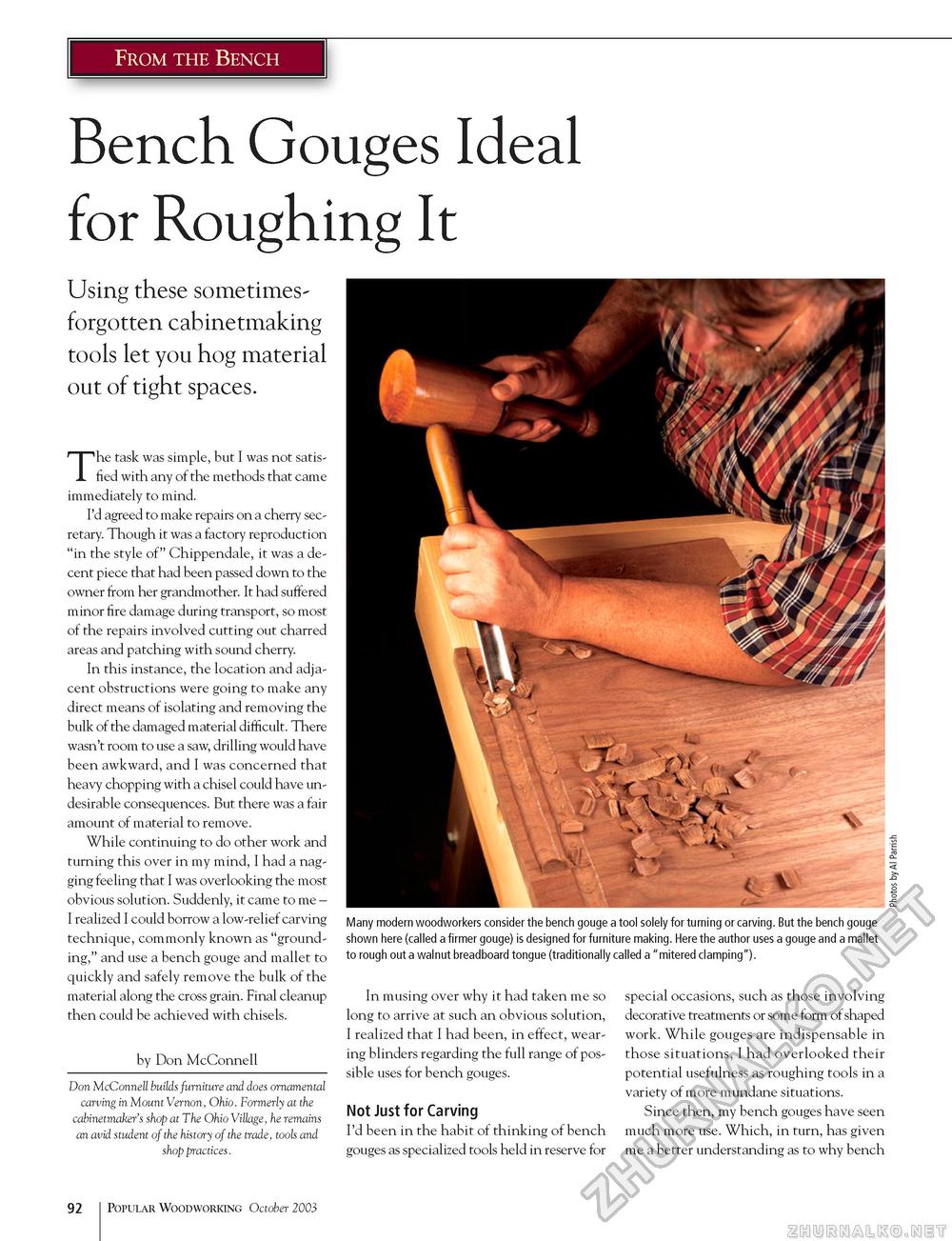Popular Woodworking 2003-10 № 136, страница 92
From the Bench Bench Gouges Ideal for Roughing ItUsing these sometimes-forgotten cabinetmaking tools let you hog material out of tight spaces. The task was simple, but I was not satisfied with any of the methods that came immediately to mind. I'd agreed to make repairs on a cherry secretary. Though it was a factory reproduction "in the style of" Chippendale, it was a decent piece that had been passed down to the owner from her grandmother. It had suffered minor fire damage during transport, so most of the repairs involved cutting out charred areas and patching with sound cherry. In this instance, the location and adjacent obstructions were going to make any direct means of isolating and removing the bulk of the damaged material difficult. There wasn't room to use a saw, drilling would have been awkward, and I was concerned that heavy chopping with a chisel could have undesirable consequences. But there was a fair amount of material to remove. While continuing to do other work and turning this over in my mind, I had a nagging feeling that I was overlooking the most obvious solution. Suddenly, it came to me -I realized I could borrow a low-relief carving technique, commonly known as "grounding," and use a bench gouge and mallet to quickly and safely remove the bulk of the material along the cross grain. Final cleanup then could be achieved with chisels. by Don McConnell Don McConnell builds furniture and does ornamental carving in Mount Vernon, Ohio. Formerly at the cabinetmaker's shop at The Ohio Village, he remains an avid student of the history of the trade, tools and shop practices. Many modern woodworkers consider the bench gouge a tool solely for turning or carving. But the bench gouge shown here (called a firmer gouge) is designed for furniture making. Here the author uses a gouge and a mallet to rough out a walnut breadboard tongue (traditionally called a "mitered clamping"). In musing over why it had taken me so long to arrive at such an obvious solution, I realized that I had been, in effect, wearing blinders regarding the full range of possible uses for bench gouges. Not Just for Carving I'd been in the habit of thinking of bench gouges as specialized tools held in reserve for special occasions, such as those involving decorative treatments or some form of shaped work. While gouges are indispensable in those situations, I had overlooked their potential usefulness as roughing tools in a variety of more mundane situations. Since then, my bench gouges have seen much more use. Which, in turn, has given me a better understanding as to why bench 92 Popular Woodworking October 2003 |








